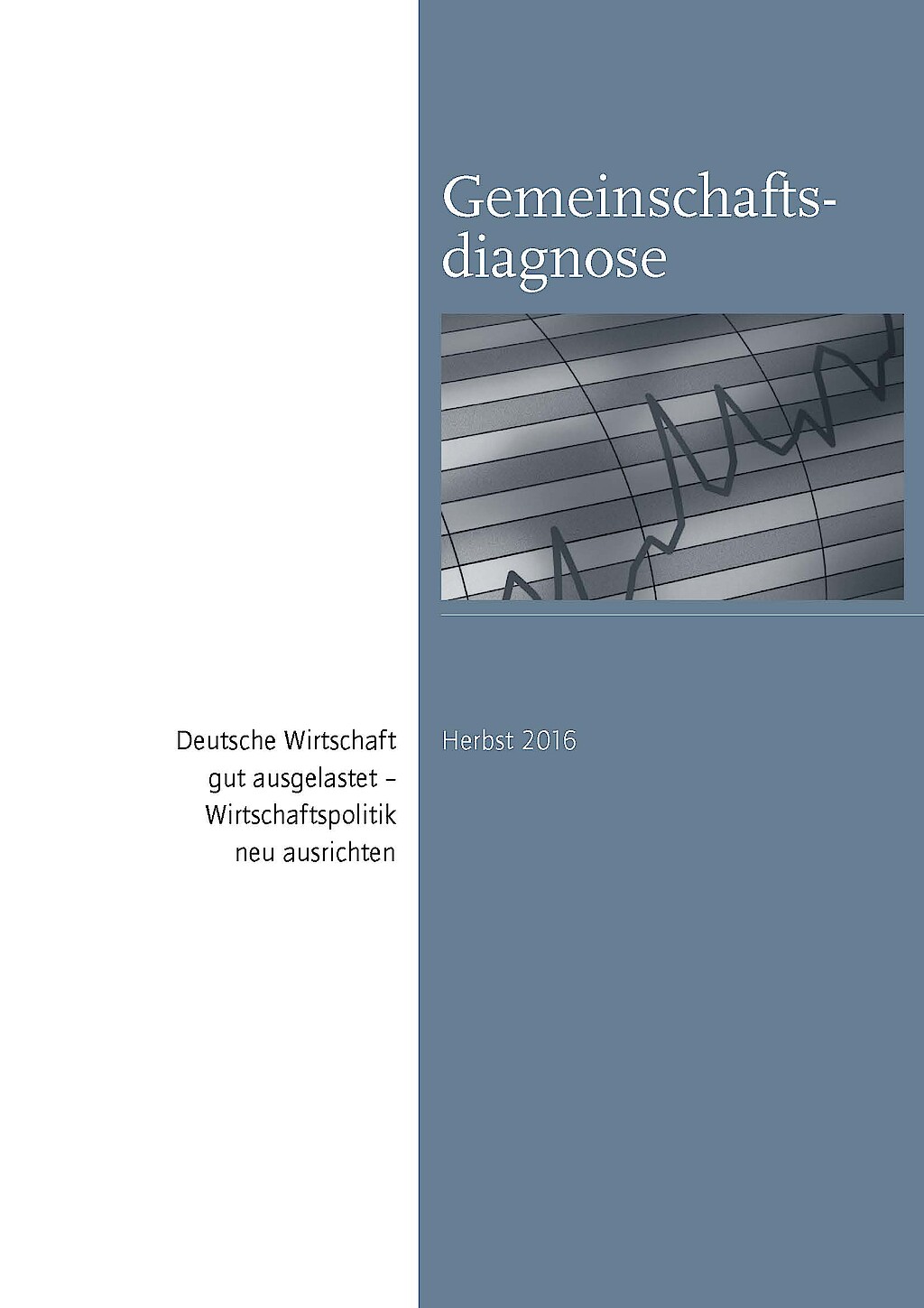Joint Economic Forecast: German Economy on Track – Economic Policy needs to be Realigned
Whom to contact
For Researchers

Vice President Department Head
If you have any further questions please contact me.
+49 345 7753-800 Request per E-MailFor Journalists

Internal and External Communications
If you have any further questions please contact me.
+49 345 7753-832 Request per E-MailIWH list of experts
The IWH list of experts provides an overview of IWH research topics and the researchers and scientists in these areas. The relevant experts for the topics listed there can be reached for questions as usual through the IWH Press Office.
Related Publications

Deutsche Wirtschaft gut ausgelastet – Wirtschaftspolitik neu ausrichten: Gemeinschaftsdiagnose im Herbst 2016
in: Gemeinschaftsdiagnose Herbst 2016. Berlin, 2016
Abstract
Die deutsche Wirtschaft befindet sich in einem moderaten Aufschwung. Das Bruttoinlandsprodukt dürfte in diesem Jahr um 1,9 Prozent und im kommenden Jahr um 1,4 Prozent zulegen. Im Jahr 2018 dürfte die Expansionsrate bei 1,6 Prozent liegen. Die gesamtwirtschaftlichen Kapazitäten sind damit im Prognosezeitraum etwas stärker ausgelastet als im langjährigen Mittel. Dennoch sind es derzeit weniger die Unternehmensinvestitionen, die den Aufschwung tragen: Von der Weltkonjunktur gehen nur geringe stimulierende Effekte aus, so dass die Exporte nur moderat steigen; zudem dürften sich in den außerordentlich niedrigen Kapitalmarktzinsen nicht nur die derzeitige Geldpolitik, sondern auch niedrige Wachstumserwartungen widerspiegeln. All dies hemmt die Ausrüstungsinvestitionen. So ist es weiterhin in erster Linie der Konsum, der den Aufschwung trägt. Der private Verbrauch profitiert dabei insbesondere vom anhaltenden Beschäftigungsaufbau, beim öffentlichen Konsum machen sich weiterhin die hohen Aufwendungen zur Unterbringung und Integration von Flüchtlingen bemerkbar. Der Wohnungsbau wird durch die niedrigen Zinsen angeregt.



